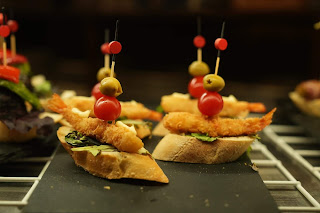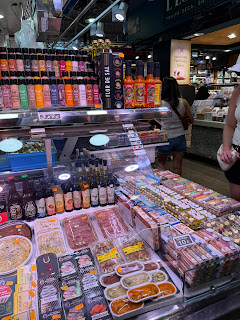Today we had class followed by a visit to a local market. Class for this experience are nothing like the classes I hold while at the university in a typical semester. Rather than me lecturing on while students do their best to feign some level of interest, classes here are simple and to the point. I do not have a text book or PowerPoint slides. Just a simple agenda of topics to discuss. The city is our textbook. Discussions revolve around our observations and give students an opportunity to reflect on those observations. We focus on learning. And I don’t have to drag it out of them! Perhaps it’s because they’re more interested in the conversation we are having. I’m learning it’s also partly due to their comfort level with me and their peers. Students are willing to put themselves out there which is wonderful to see. I love seeing these kids come out of their shells. This all makes me wonder how I can bring some of this back to my typical classes. This is something I’ll be considering on the long flight home. Tapas during class perhaps?!
Our visit to the market was wonderful. There are two kinds of markets in Spain. There are markets that locals visit to purchase the foods they need to take home and prepare meals. The second type of market is the more commercialized version, tailored to the desires of tourists. These markets tend to have takeaway options, but also include full restaurants and bars embedded within. Their are places to sit and enjoy the delicacies you find. Both are lovely. We visited the old style market and were introduced to the experience by a local tour guide named Anna.
We learned that markets are the heart and soul of cities in Spain. This is where the life is she said. “If you want to understand a city in Spain, visit the market and the cemetery.” I thought this was strange at first, but there’s a lot of truth to it. Life and death. Local markets are filled with vendors who are experts in their fields. They get to know their customers on a first name basis and often times hold demonstrations and cooking classes on the weekends for folks who don’t know how to use the products they’re selling. In Spain, markets include everything from fresh fruits and vegetables, to fresh seafood, to olives, to cured meats, and even sweets for dessert.
We had the opportunity to taste some of the local cheeses, olives, and cured meats at a local market. We ended our tour by going to a local restaurant that is supplied by this market. The specific type of restaurant we visited is something called a Pinxto Restaurant, which is unique to the Barcelona area. Pinxto’s are like little snacks on skewers that you might get on the go. They vary but could include things like a slice of fresh bread, topped with a local with cheese, olives, and tomatoes. Or something more savory. Usually a person will go and grab two or three pixto’s and pair it with a glass of wine, beer or cold beverage. Brilliant!
To round out my market experience, I went to La Boqueria market which has been rated as the best market in the world. This market used to be for locals, but has slowly transitioned to a market for tourists. Don’t tell the locals, but I friggin love it! It is indeed alive and full of an extremely diverse group of people. Today for lunch, I had a steak skewer, an empanada, and a cup of the most amazing sliced mango I’ve ever had. All for about €10. Local, delicious, and inexpensive. What’s not to like?!
Inside of the old-school market. Very nice and relaxed.You got your fishes…











No comments:
Post a Comment